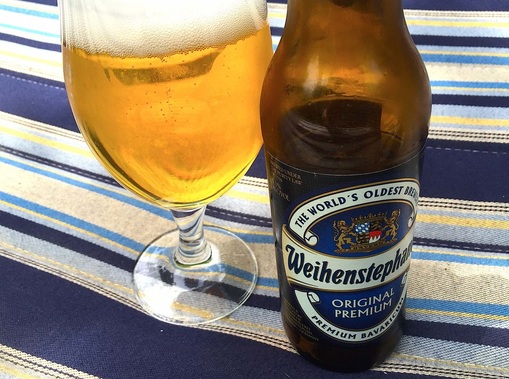|
In this article, you'll learn the basics of how people make beer. Thank God for those people, because there's a lot to make beer. To make beer, you need:
Before you can brew beer, you must take grain from the field and turn it into malt, which is the vital ingredient to making beer.
Malt Barley is the grain used by most brewers. Barley brings a sweet, juicy, and biscuity character to beer. Oat and rye are not so commonly used. The best type of barley to use is called maritime "two-row," called that because of two rows of grain within each ear and it grows near the sea. U.S. craft brewers may import malt from Europe when crafting specific beer flavors. Barely needs to be washed thoroughly to clean it and remove bacteria. Germination begins when the grain absorbs moisture. At a certain moisture level, the grain is spread out to dry and germination continues for several days. During germination, complex chemical changes occur that turn proteins into enzymes, and the starch in the grain becomes soluble. When the embryo of the plant grows and tiny roots break through the husk, this is called modification. To create an ale, a brewer might want a fully modified malt, so that the enzymes convert the starch into sugar. To create a lager, a brewer might want a poorly modified malt, so that proteins remain. This grain is taken to the kiln to heat up and dry. All brewers need malt that is gently roasted to yield lots of enzymes. This is called pale malt. When you heat up the grain, you produce darker malts for amber, brown, black, and chocolates. Unmalted roasted barley is heated at very high temperatures and can be used for stouts. Hops Hops is a plant that contributes bitterness to the beer. Bitterness balances the sweet biscuity taste of malt. Hops also brings aromas and flavors. Hops are picked and dried. Then they are turned into pellets my milling and reduced under great pressure. Some big breweries use hop extract syrup. There are many different kinds of hops. Hope are grown all over the world. American hops are robust in their citrus character. Lager hops may come from the Czech Republic. Germans call their hops noble. English hops have medium bitterness. Each variety of hops, just like grapes, can have their own character, flavor, and aroma. Brewers will often blend more than one hop variety to achieve what they desire in their beer. Water Beer is mostly water. A beer could be about 93% water. Therefore, water quality is critical. Crappy water, crappy beer. For centuries, breweries have used natural well or spring water for the best quality water. Brewers refer to water as liquor, and they adjust their liquor to suit their purposes. All quality brewers filter and cleanse their liquor to remove impurities and agricultural chemicals that can affect the beer. Yeast Yeast is a single-celled plant, a fungus, that turns a sugary liquid into alcohol and carbon dioxide. It wasn't until the 18th century that folks were able to explain how yeast plays a critical role in brewing. Louis Pasteur and his microscope showed that alcohol was produced by a natural chemical reaction in which yeast cells multiplied as they converted sugars into alcohol and carbon dioxide. There are two types of yeasts that brewers use: ale and lager yeasts. These two types of yeasts are often called cold fermenting and warm fermenting strains. Ale yeasts will work at 55℉ and above, and lager yeasts work at cold temperatures as low as 40℉. Brewing To brew, you have to grind the malt into grist. Then the malt and liquor are mixed in a large vessel called a mash tun. The mixture is left to sit and to allow the enzymes in the malt to convert the starch into two types of sugar. Maltose is fermentable. Dextrins give body and flavor to the beer. The sugars dissolve and produce and extract called wort. When the time is just right, the brewer opens the vessel and the drained wort filters through the spent grain. The wort is then pushed to the copper or stainless steel vessel. The boiling wort bubbles up through a central tube in the vessel, while hops are added through a top hatch of the vessel at specially-selected times. After everything is boiled, the hopped-up wort is filtered and drained into another vessel called a hop back. This liquid is cooled and run through fermenting vessels where the liquid yeast is mixed, or "pitched." The conversion to alcohol may take as long as two weeks. Finally, the liquid is run into tanks for a long, slow second fermentation and ripening to a full-flavored beer. Ale and lager fermentation processes are different, but the goal is the same -- to produce beer that we can drink and enjoy. Tips for Men to Be Better Men, Wonderful Husbands, and Loving Fathers
|
Archives
December 2021
|




